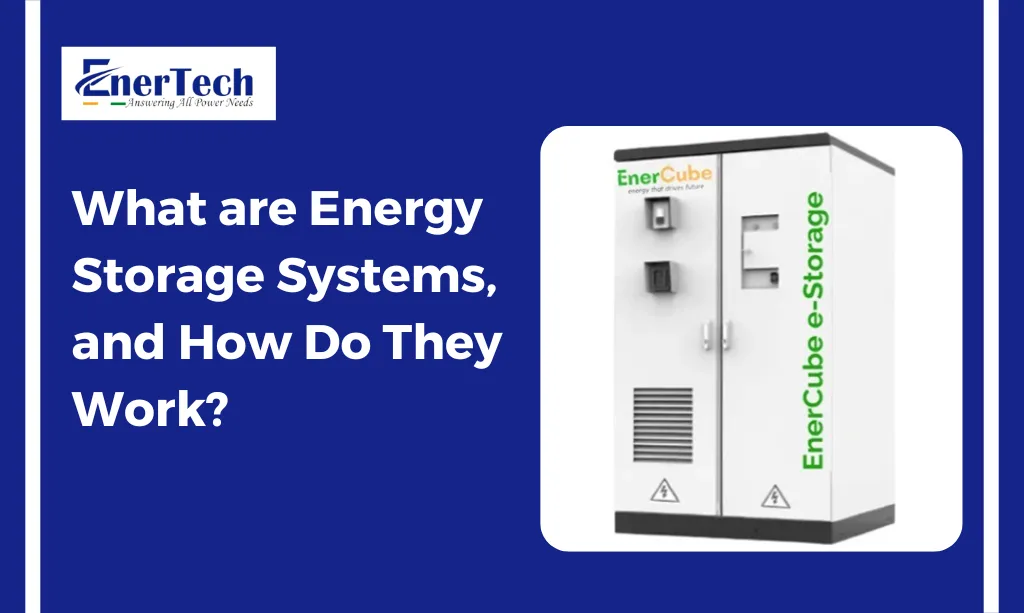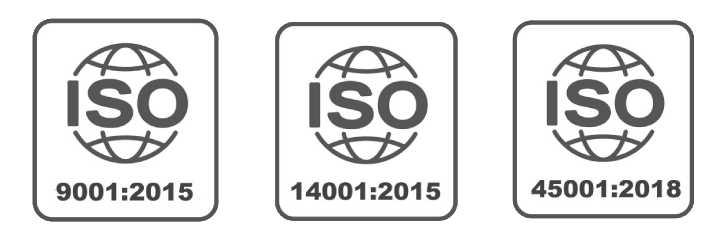Whether you are a household, a production unit, or a business, you need a continuous electricity supply to stay powered and perform daily functions. But what after the sun sets? Ever wondered what powers a solar energy light works after the sun goes offline? The answer is an Energy Storage System (ESS).
ESSs play a crucial role amidst today’s highly electrified world and the need to transition to cleaner energy. You can call the unsung heroes of power grids!
However, what are energy storage systems, what are their benefits and how do they work? While the concept is obvious, let’s look at ESSs and their various aspects.
Key Takeaways
- ESSs store energy for later use
- The enhance grid stability, save costs, and provide renewable support
- Their choice depends on capacity, technology, needs, budget, and integration
- They support clean and green energy
- Harness the Power of ESS with EnerCube!
What are Energy Storage Systems?
ESS captures the energy generated at a particular time and stores it for later use. It works as a giant rechargeable battery at a much larger scale and comprises technologies beyond batteries. In an even simpler analogy, it is like a savings account for electricity where you save the excess you have in a fixed deposit.
When you produce more power from solar panels than you need, you save it into an ESS. And then when you need it, you can withdraw and use the energy.
How Do Energy Storage Systems (ESS) Work?
Storage systems come in various types, each with a unique working pattern. Here’s more.
-
Chemical Storage
Lithium-ion batteries are the most commonly used energy storage systems, powering everything from smartphones to EVs. Chemical storages work by converting electricity into chemical energy and storing it in battery cells. So, when needed, the chemical reaction reverses, releasing the energy back as electricity.
-
Thermal Energy Storage (TES)
TES stores energy as cold or heat. Excess electricity is used to cool or heat a storage medium. Then, that stored thermal energy can later be used to produce electricity or regulate the temperature of a building.
-
Mechanical Storage
In this system type, energy is stored in motion or pressure. Flywheels spin at a high speed to store kinetic energy. Compressed systems store energy by compressing air into underground caverns, later released to power turbines.
-
Pumped Hydro Storage
It involves pumping water uphill to a reservoir during low electricity demand. When the demand is high, the water is released via turbines to generate electricity.
Benefits of Energy Storage Systems
In a way, ESSs may look like backup generators. However, they are much more than that. Instead, one can call them game-changers across the evolving energy landscape.
-
Grid Stabilization
ESS helps streamline supply and demand fluctuations, preventing blackouts and minimizing the need for the often fossil-fuel-based peaker plants.
-
Renewable Integration
Solar and wind power are reliable, yet intermittent. ESSs help capture additional energy when available and release it during low spells of solar and wind availability.
-
Enhancing Energy Resilience
ESSs can be used as a backup during outages, ensuring uninterrupted power supply to power households, manufacturing setups, and businesses. While offering peace of mind, it helps enhance energy resilience and independence.
-
Reduced Carbon Emissions
ESS can facilitate the adoption of renewables and reduce the dependence on fossil fuel-based electricity generation, thus reducing carbon emissions and contributing to the world’s efforts to make the planet greener and better.
How to Choose the Right Energy Storage System (ESS)?
While ESSs help, choosing the right ones matters. Here are some generic tips to help you choose the best-suited energy storage system for your needs.
- Application: Identify the application you need the ESS for – whether residential backup, grid-scale stability, or anything else. This will also help you determine your energy needs – a decisive factor in choosing the right ESS.
- System Capacity: This includes determining the power rating which means how much electricity that system can provide at once and energy capacity which refers to the duration for which the system can deliver power.
- Technology Type: The battery type also matters while making a choice. For example, lithium-ion batteries are efficient but may degrade with time. On the other hand, lead-acid batteries are cost-effective but less efficient and heavier. Consulting an expert or an ESS manufacturer can help you decide the right option.
- Integration: If you’ve already switched to solar panels, ensure your ESS is compatible with the existing setup and integrates seamlessly.
Learn More: BESS Tech: Future of Energy Storage Solution, Type, and Working
EnerCube’s BESS (Battery Energy Storage System) is a transformative system that represents rechargeable batteries to store energy from multiple sources and release as required. The system is thoughtfully engineered to meet contemporary electricity challenges across the domestic and industrial world. It lets you truly unleash the power of ESS with stellar features and advanced functionalities. Want to know more? Explore EnerCube and email us at support@enertechups.com to discuss its utility in your context.




